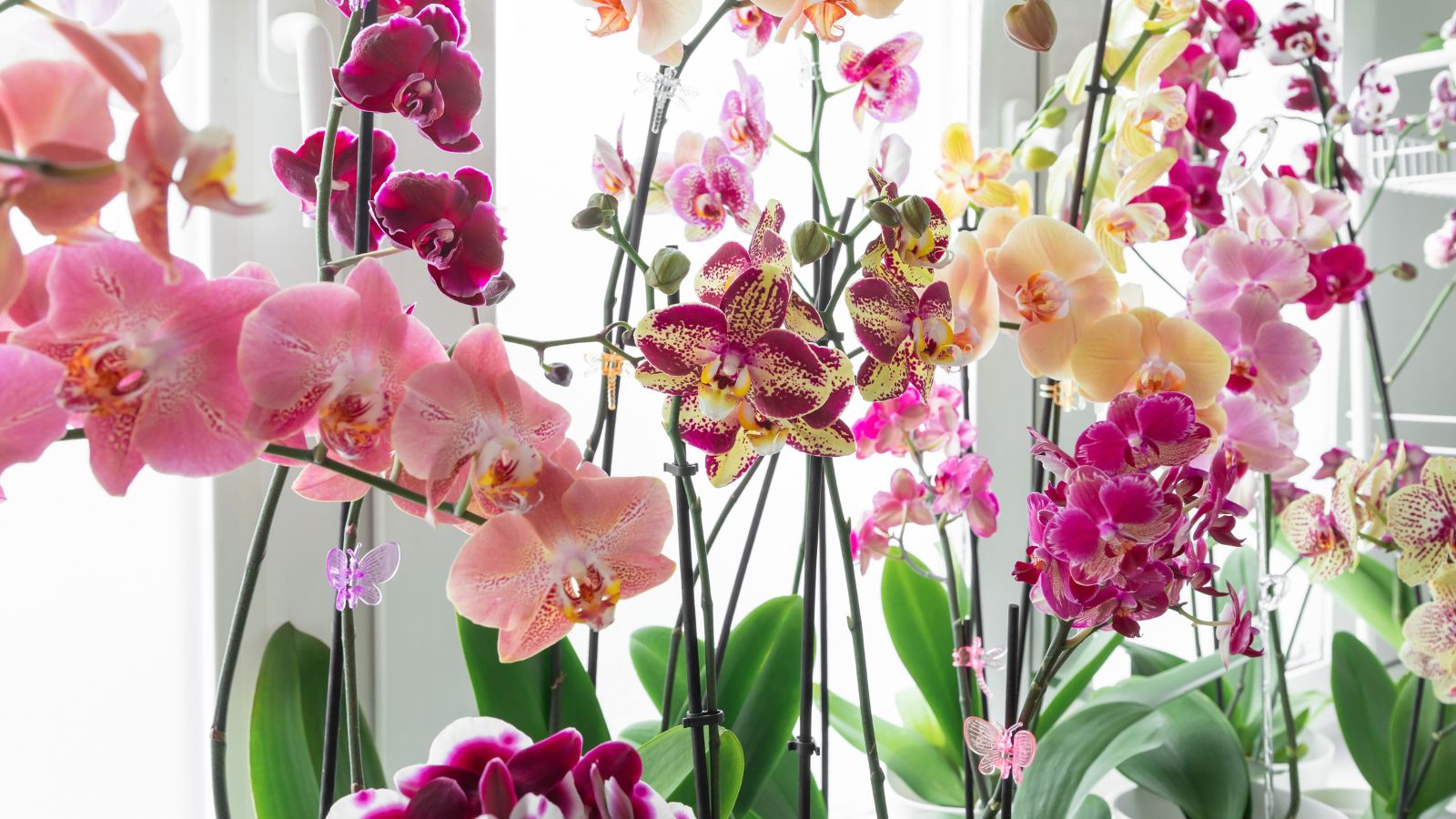Orchids is also mysterious, notably for these new to the curiosity. These epiphytes don’t develop in soil all through the wild like commonest houseplants, so their elementary wishes are a bit fully completely totally different. How do you repot them, and when must you do it?
When repotting a rising orchid, a major rule of thumb is to pursue a mannequin new container that’s one measurement up from the earlier. This implies about two inches wider in diameter. It’s advisable to at all times use present bark or potting combine.
There are a handful of tell-tale alerts that it’s time to maneuver your orchid into a good bigger, brisker pot. There’s furthermore a listing of not-so-obvious indicators, together with conditions the place repotting may assist a struggling plant flourish as rapidly as additional. Take into accounts the next indicators that it’s time to repot your orchid.
Crowded Roots
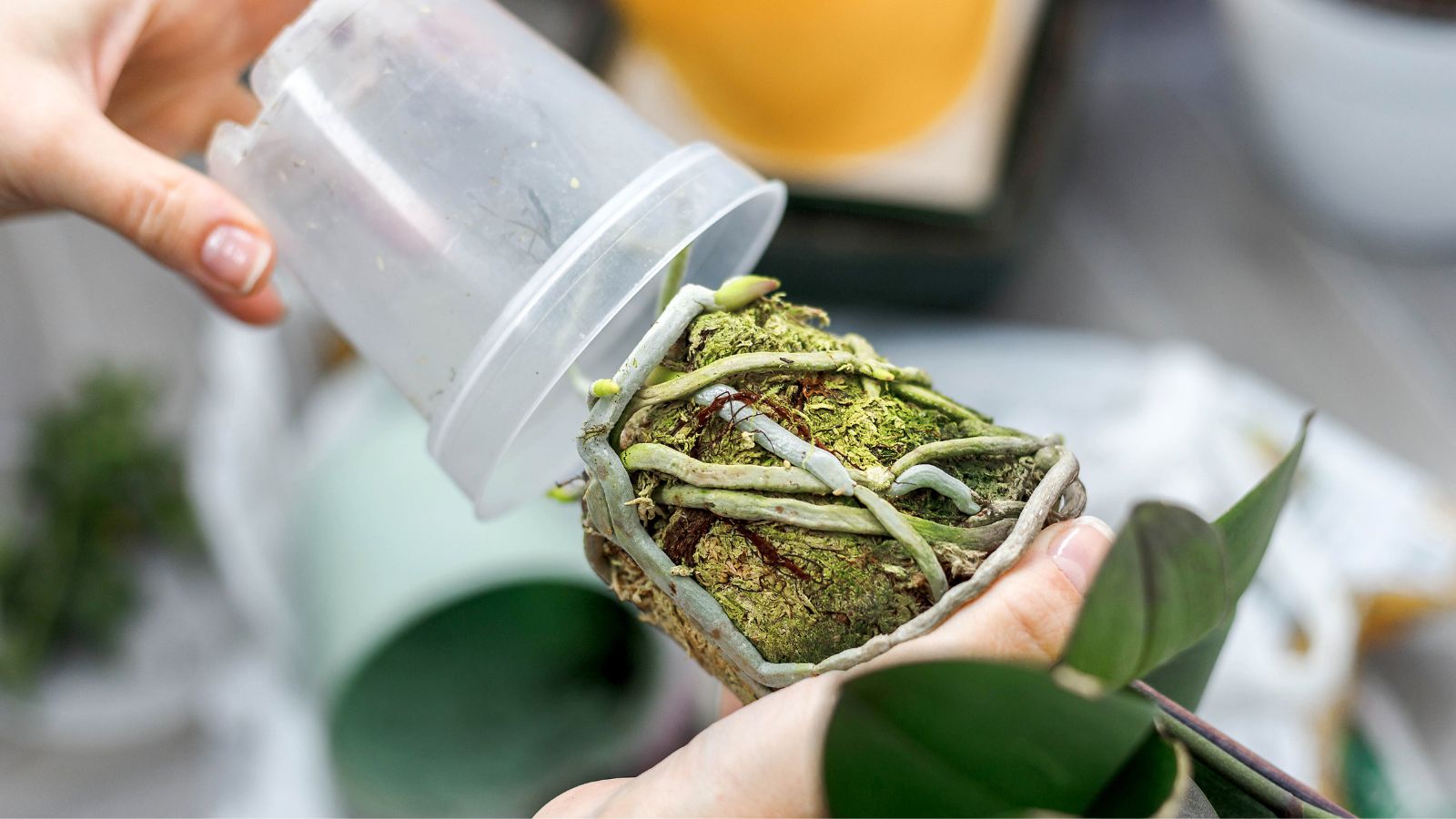

Whereas individuals often make the error of selecting pot measurement primarily based on the scale and sort of crops, it is best to actually choose pots primarily based on the scale of the inspiration ball. Nonetheless with orchids, the pot sizes ought to notably be primarily based on the quantity of roots.
If in case you have a take a look at your pot to find a tangled mass of crowded roots, it’s time to repot. The reality is, this sometimes is a bit refined since healthful specimens may want a substantial amount of aerial roots exterior of the pot, rising above the rising medium.
No matter aerial roots exterior the potting combine, you don’t need these contained inside the pot to be too crowded.
If the root-to-medium ratio is off, with technique too many roots in a pot and not at all sufficient medium, then there will not be sufficient of your chunky combine to retain moisture for the plant. It’s attainable you will see that your self having to water increasingly more additional often to maintain the plant completely happy.
Lack of air circulation all through the pot of an epiphyte might be not at all suggestion. The extra crowded the entire gadgets is contained inside the pot, the extra perhaps you’ll be able to expertise fungal progress or rot.
Extreme-Heavy Plant
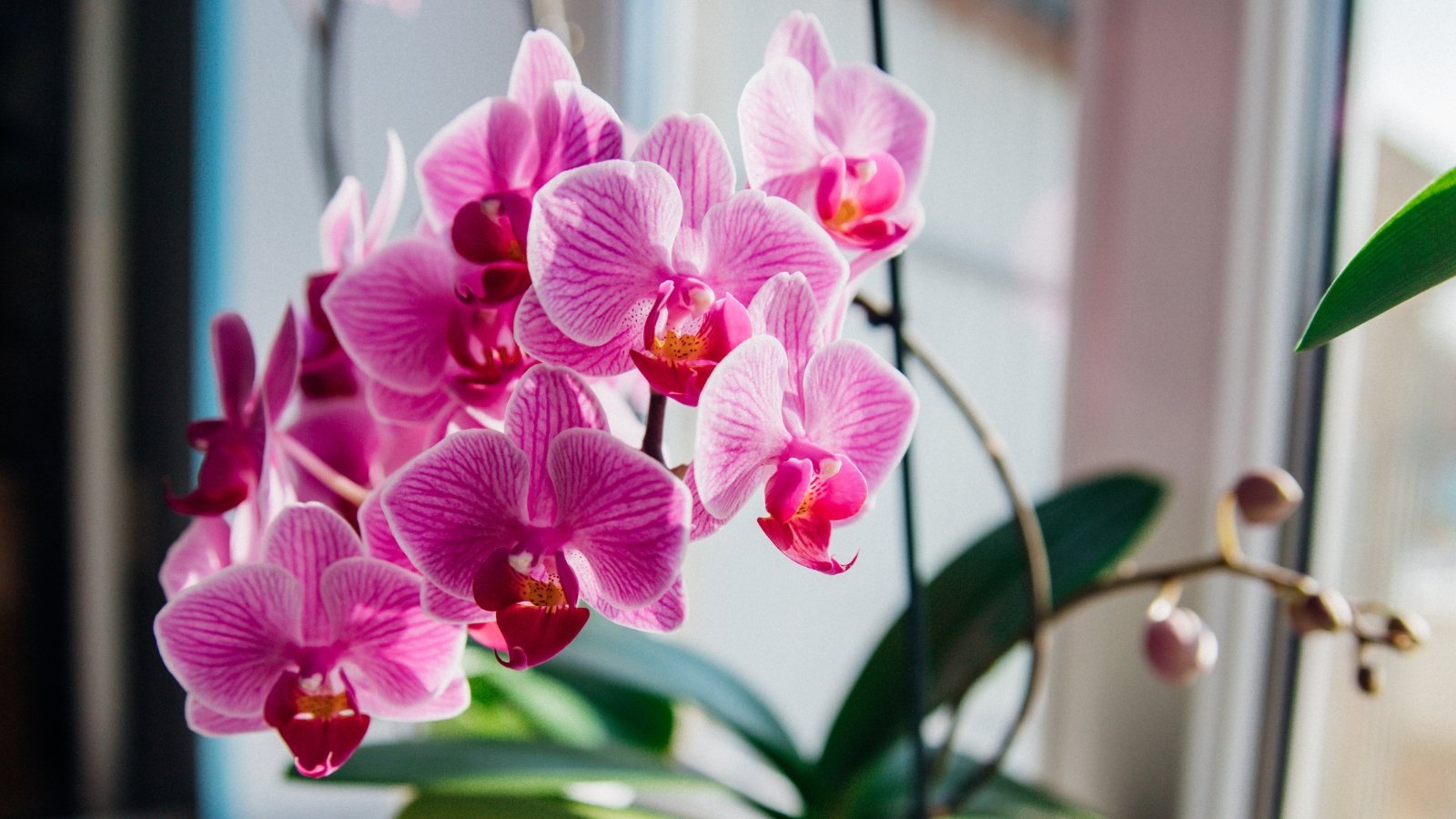

Whereas the quantity of roots ought to largely resolve the scale of the pot, you might also ought to repot a top-heavy plant.
These epiphytes naturally develop in a horizontal methodology all through the wild. Apart from incessantly rotated, they may perhaps develop this vogue in pots, too. Over time, this results in them “falling out” of the pot. A specimen with giant, heavy leaves can merely topple over, notably in a light-weight or small pot.
In case you have obtained a top-heavy plant that retains falling over or seems to be liable to doing so, take into consideration its roots. Are they considerably crowded? In that case, it’s undoubtedly time to boost.
Nonetheless, if they appear to go properly with good and you’ve got present healthful orchid combine in your pot, what must you do? Whereas it doesn’t look like the historically relevant time to repot, you positively don’t need your plant falling over.
What you’ll do on this occasion is repot correct proper right into a pot of the an an identical measurement that’s a lot heavier. This can anchor your top-heavy plant in place. Gives like ceramic and terracotta could match. Merely be sure that your new pot has a substantial amount of drainage holes and vents for aeration.
Outdated Medium
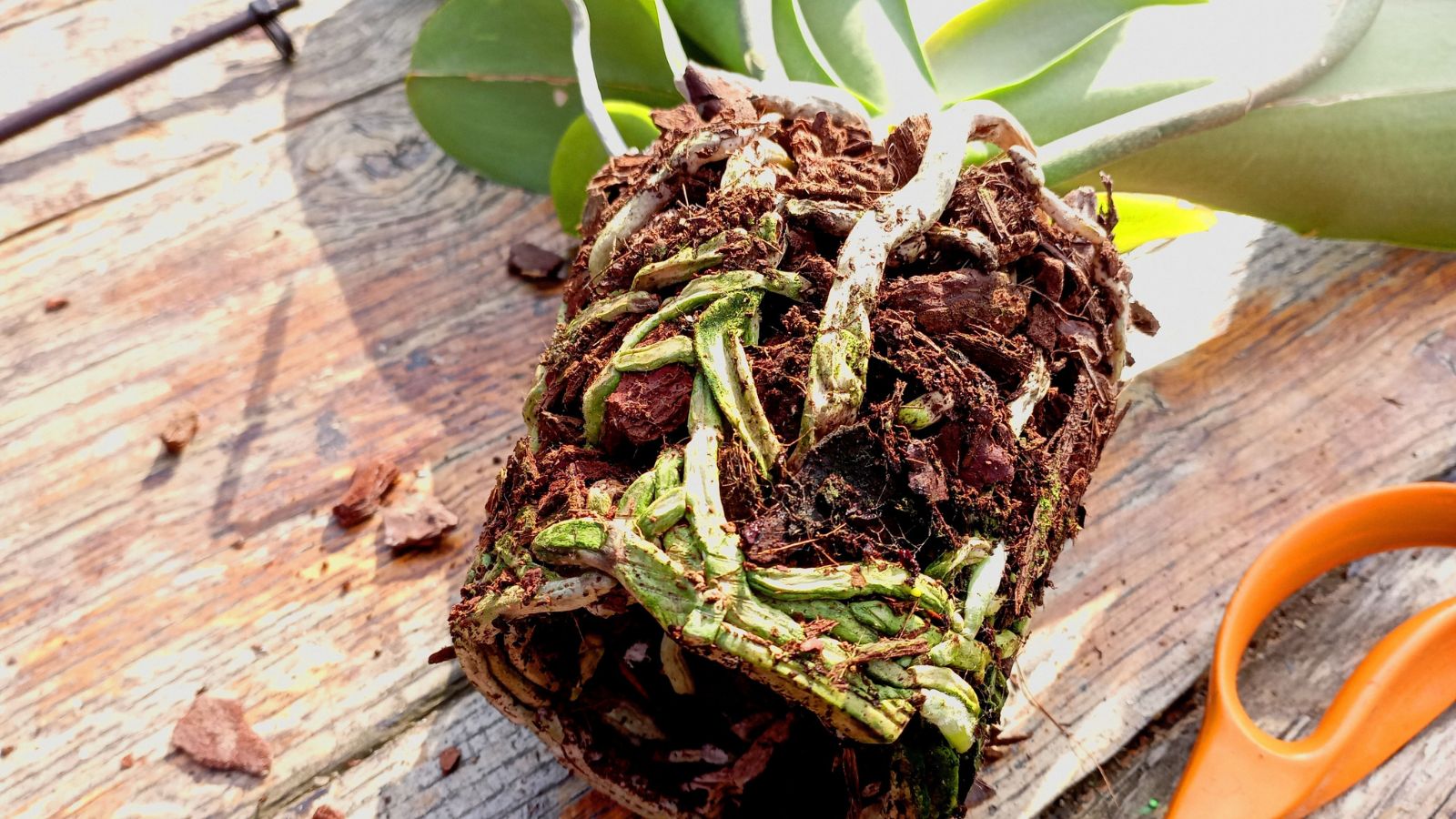

One amongst many trickiest choices of rising orchids for houseplant lovers is getting the rising medium right on account of it’s so fully completely totally different from the potting soil you’d historically use for a Monstera, a peace lily, or a cactus.
When you lastly have the precise steadiness, whether or not or not or not you’ve created your specific individual combination of orchid bark and completely totally different media or just bought a high-quality “orchid potting combine,” regulate the medium contained inside the pot. Over time, it’s going to start to interrupt down.
Outdated, broken-down potting medium that’s decomposing can result in root rot. As bark breaks down, it holds additional moisture. It’d furthermore harbor bacterial or fungal progress.
Even when it appears to be similar to the roots match all through the present pot totally, you’ve obtained to guard your healthful plant from earlier media. If the present pot continues to be the precise measurement, you’ll be able to take away the plant, throw away or compost the sooner medium, and replant the orchid inside the an an identical pot with present media. Merely be sure you clear and disinfect the pot first.
If the medium is earlier, smelly, and decomposing, and your plant generally is a bit too enormous for its present vessel? Repot, with present medium in a a lot larger container.
Lack of Blooms
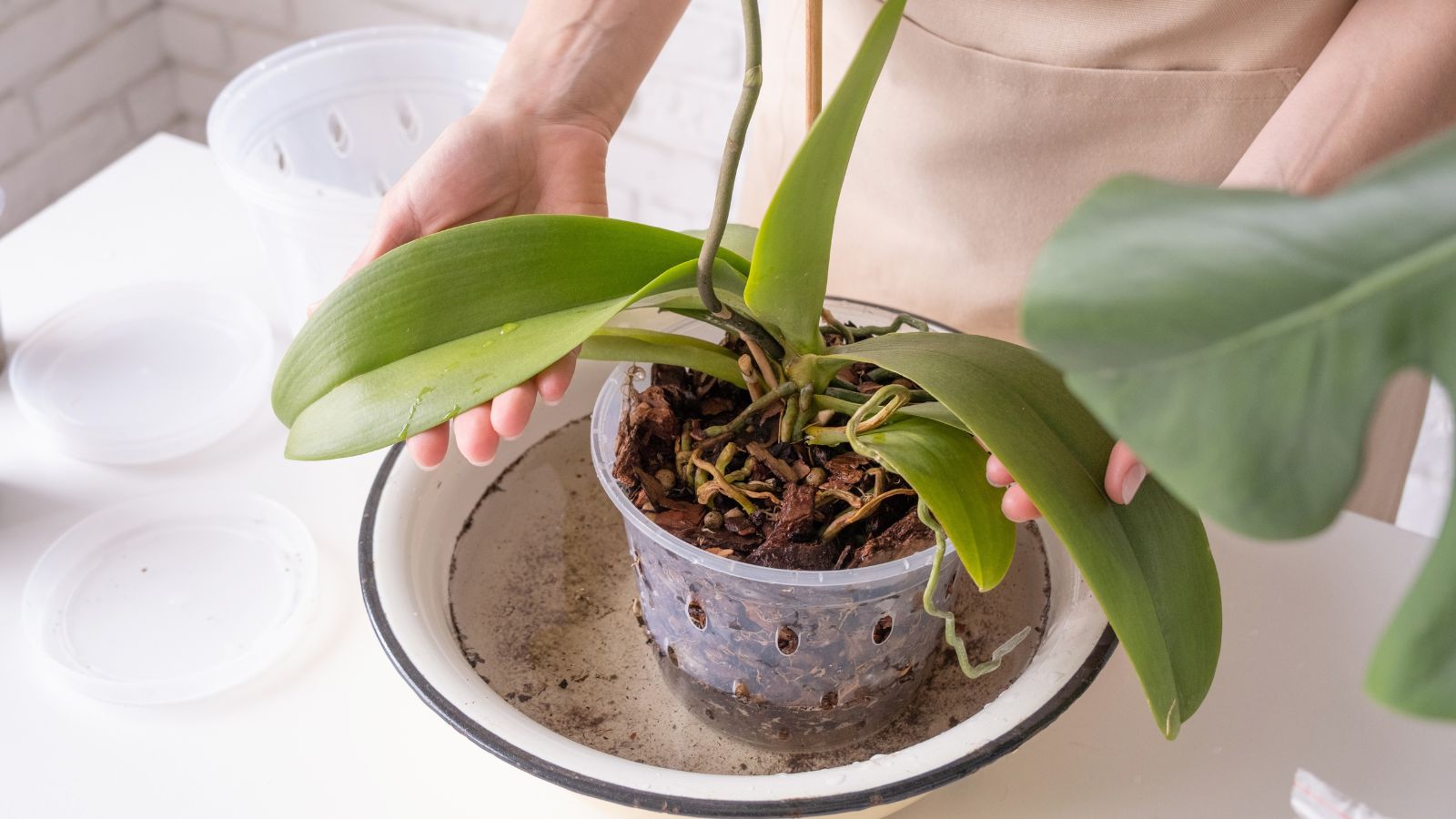

Let’s be sincere. There are quite a few the rationale why orchids will not bloom as often or as prolifically as you’d like. Lack of sunshine, lack of fertilizer, incorrect temperatures, drafts, unhealthy roots, and completely various factors can all set off a plant to cease blooming.
If yours hasn’t bloomed in a 12 months or two, there are quite a few potential culprits. First, it is best to play detective, slowly making it by means of the foundations of the rationale why blooming has stopped.
Assure it’s getting the becoming quantity of sunshine, water, and fertilizer. Make sure that it’s housed all through the appropriate medium with a substantial amount of airflow. Affirm that your watering technique is appropriate. Actually take a look at the entire potential causes.
In my expertise, lack of sunshine tends to be the ultimate phrase offender. It’s attainable you’ll assume your orchid is getting sufficient light close to your hottest window or beneath a develop light, however most likely it isn’t. Swap it to a extremely brighter spot, and also you may even see a mannequin new leaf inside weeks, and a flower stalk to look at later.
When you’ve accomplished your due diligence, merely take into consideration that there’s nothing else you’ll do, and have waited patiently for higher than a 12 months, then attempt repotting. Maybe an airier vessel or present medium will do the trick.
Stunted Progress
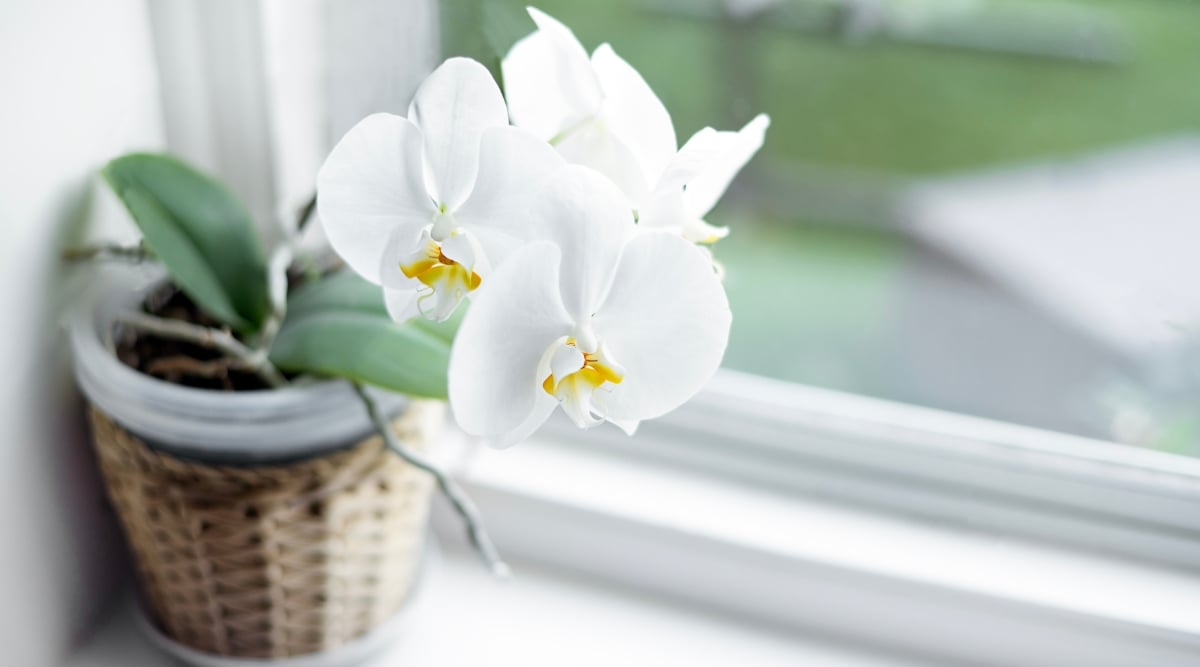

Similar to the “lack of blooms” signal, many elements may set off stunted progress. Orchids want merely the correct amount of water, precisely utilized fertilizer, and additional light than you’d assume to develop precisely.
With time, your epiphyte could expertise stunted progress. This may be notably obvious within the occasion you’ve had a plant for a extremely very very long time and are accustomed to how shortly it grew prior to now. When you’re constructive that your orchid has slowed down, it’s time to contemplate a repot.
Presumably there isn’t as a lot room all through the present container as wanted. Maybe that is inflicting a scarcity of water or nutrient uptake. Presumably the medium isn’t precisely rotting, however it’s not as present as your plant would favor. These crops is also choosy!
In case your orchid has grown repeatedly for years and is in an beautiful place for correct picture voltaic publicity, however it’s all of the sudden begun to develop fairly additional slowly, ponder repotting it. Shifting it correct proper right into a barely bigger vessel with present medium may do the trick.
It’ll furthermore current the selection to take a look at intently within the occasion you’re transferring from one container to the choice.
Wrinkled Leaves
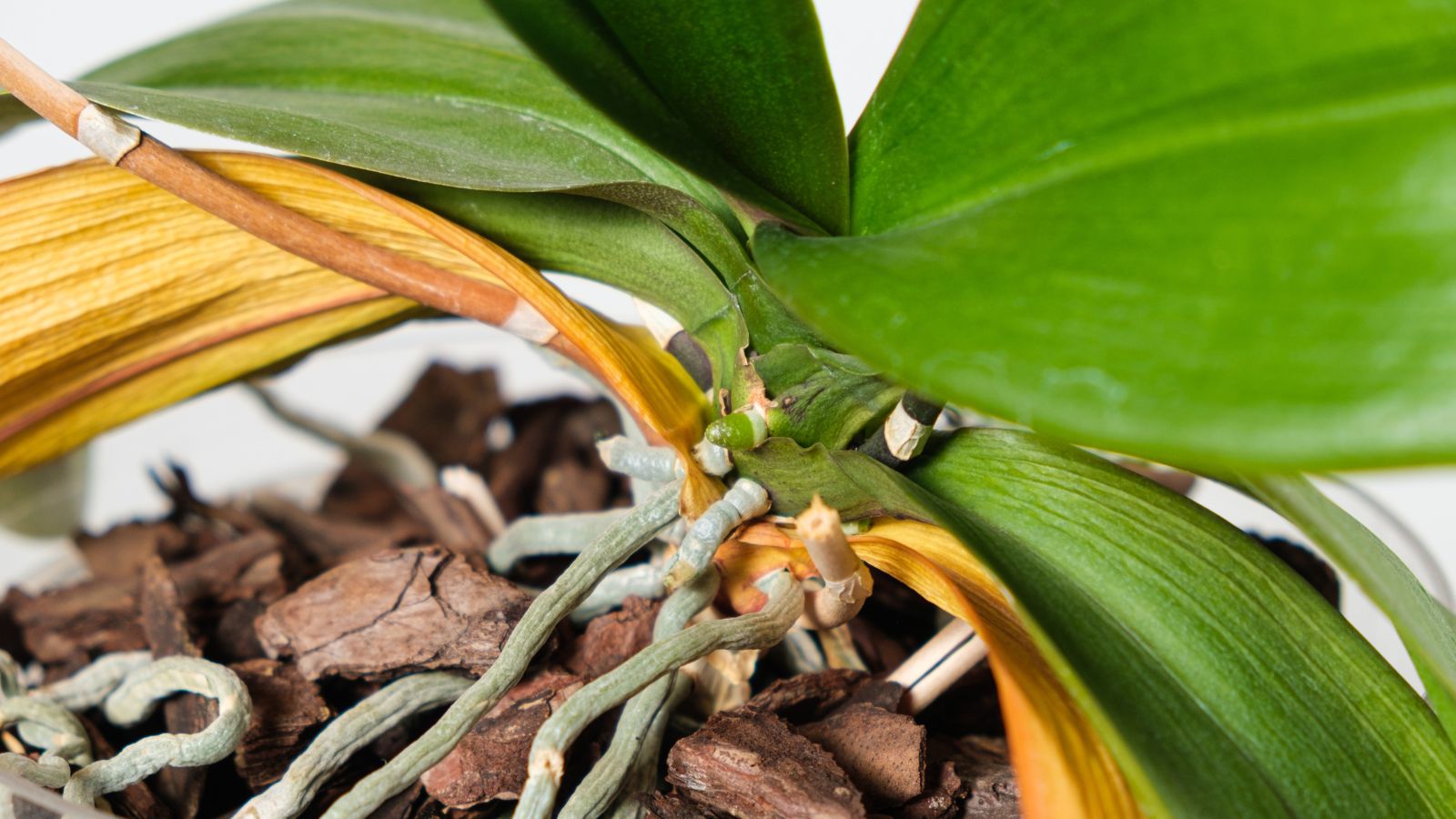

Wrinkled leaves in an in another case healthful orchid are an indicator that the leaves are usually not uptaking as a lot water as they’d like, ensuing inside the puckering, wrinkled look. These leaves are perhaps furthermore floppy and battle to deal with their sort.
The reality is, the very very very first thing it is best to do for an orchid with wrinkled, wilting leaves is water it. Nonetheless, inside the event you’ve found that your leaves proceed to look this vogue regardless of a stellar watering schedule, it’s time to evaluation the inspiration set off.
Orchids which have outgrown their container will dry out a lot quicker. The medium of their containers can solely comprise a positive quantity of moisture every time you water. If the crops have grown bigger with considerably additional roots, they gained’t have entry to sufficient moisture.
Roots may additionally be unable to uptake a lot moisture or dietary nutritional vitamins from decomposing medium, which might finish in wrinkled leaves. And at last, satirically, you perhaps have watered an excessive amount of and too often, the roots may want rotted. This implies they can not uptake water, resulting in wrinkled leaves.
Take into accounts repotting to a barely bigger container with present medium. In case your orchid roots are rotten, rigorously take away the roots to revive root rot, repot into an appropriately-sized container, and take measures to avoid rot going ahead.
Extreme Uncovered Roots
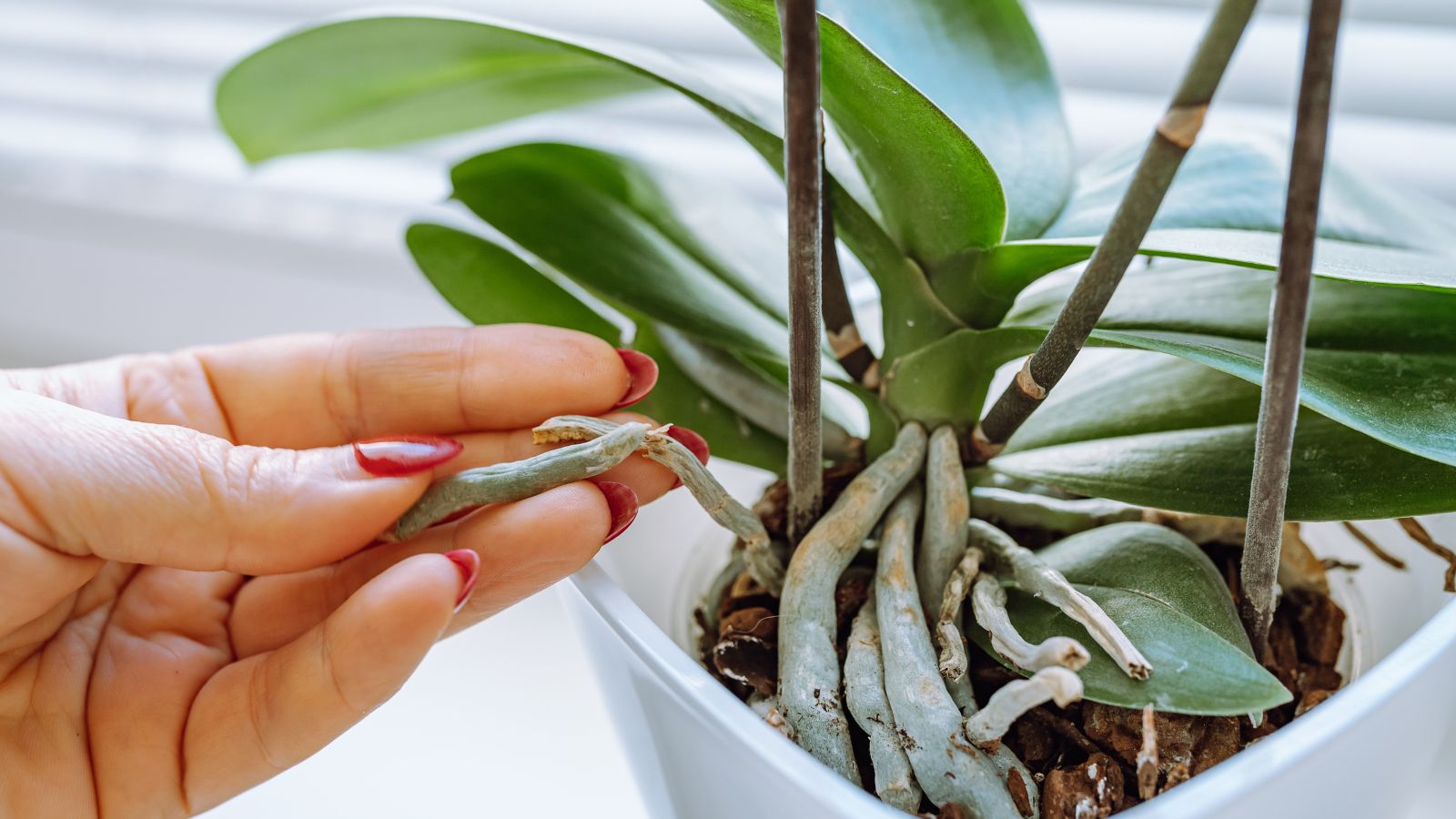

It’s totally widespread for orchids to have uncovered aerial roots. In nature, these crops wouldn’t be rising in soil. They wouldn’t be rising one factor that a lot resembles “orchid bark” or “orchid potting combine” every. As many orchids are epiphytes, they flourish when hooked as a lot as timber or completely totally different crops.
Their roots have fairly just a few choices. They not solely uptake water and dietary nutritional vitamins nonetheless furthermore wrap spherical and fasten to bark, tree limbs, and completely totally different surfaces to maintain the orchids in place.
As such, it totally is wise that they ship out roots in wild instructions, not all of that are downward into the medium. You may want even found some sticking to your partitions or furnishings.
Whereas uncovered roots are widespread and pure, an extreme quantity of them could point out that it’s time to repot. An increasing number of can be rising earlier the medium on account of the vessel is simply too crowded.
In abstract, your orchid has outgrown its container. When upgrading to the following container, select one that can have the pliability to comprise additional roots. Watch out to not break any by way of the transition.
Spent Blooms
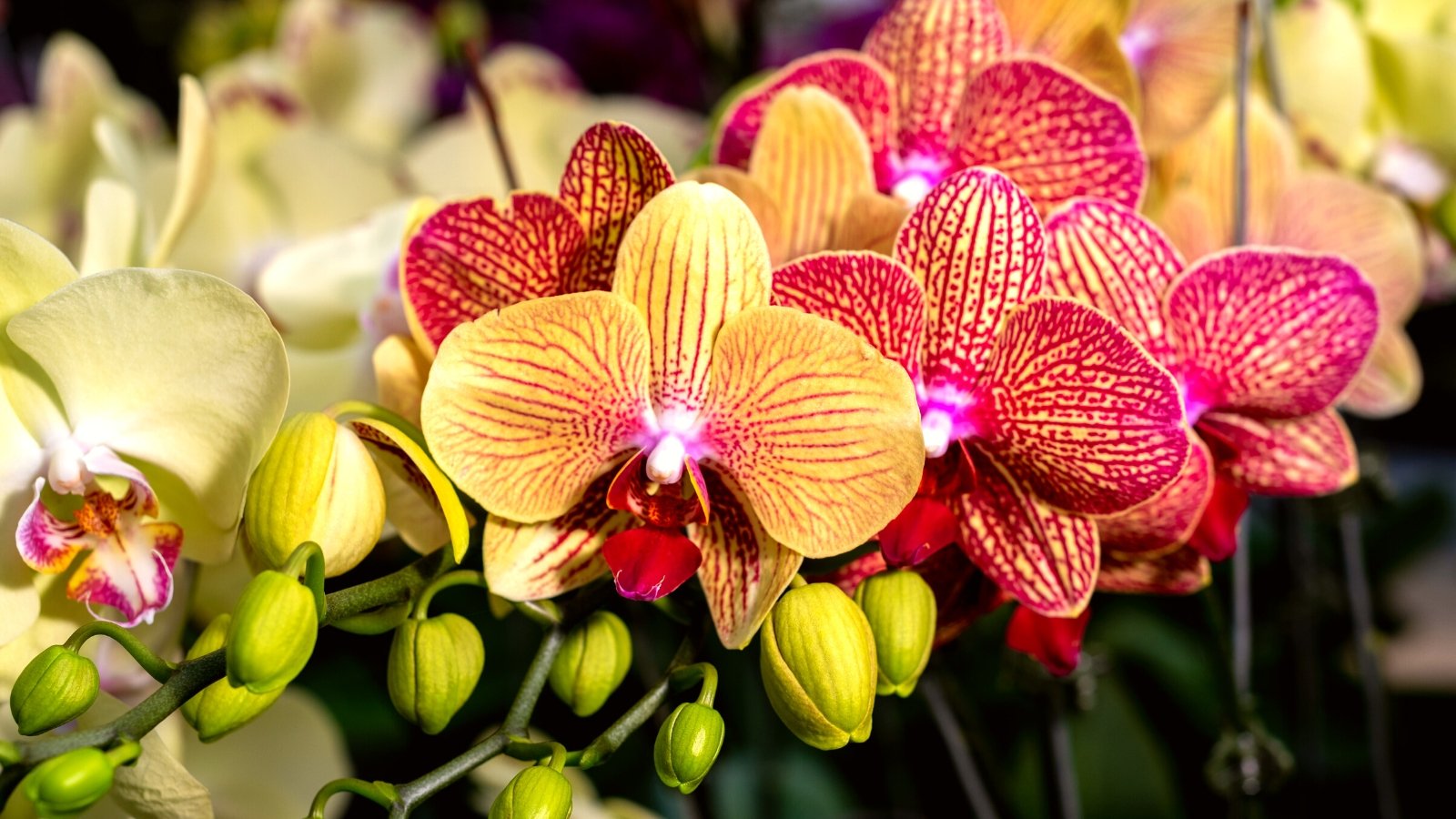

In case your orchid has merely achieved blooming—as in, the flowers have fallen and the stem has turned brown—it is possibly time to repot. This isn’t on account of the present vessel launched regarding the blooms to fade, however on account of the post-flowering interval is most likely essentially the most secure time for plant repairs.
Blooms can final for 2 to some months, after which their time is achieved till subsequent 12 months. This usually is a typical, healthful a part of the plant’s life cycle and shouldn’t concern you. For lots of growers, the flowers are the primary operate they develop these crops.
Repotting orchids whereas they’re producing a flower stalk or actively blooming is also traumatic to the plant, inflicting the stems or blooms to fade away. That’s the rationale the right time to repot, for regardless of operate, is solely after it’s achieved blooming to stop harm.
Don’t be unhappy about spent blooms. Instead, embrace this window of time to securely repot your orchid with out damaging any flowers.
Maybe you’ve observed that it’s slowly outgrowing its present container or that the medium is getting form of earlier. Presumably you merely have a mannequin new, participating pot you’d choose to utilize. Now’s the time to make the swap.
Pest Factors
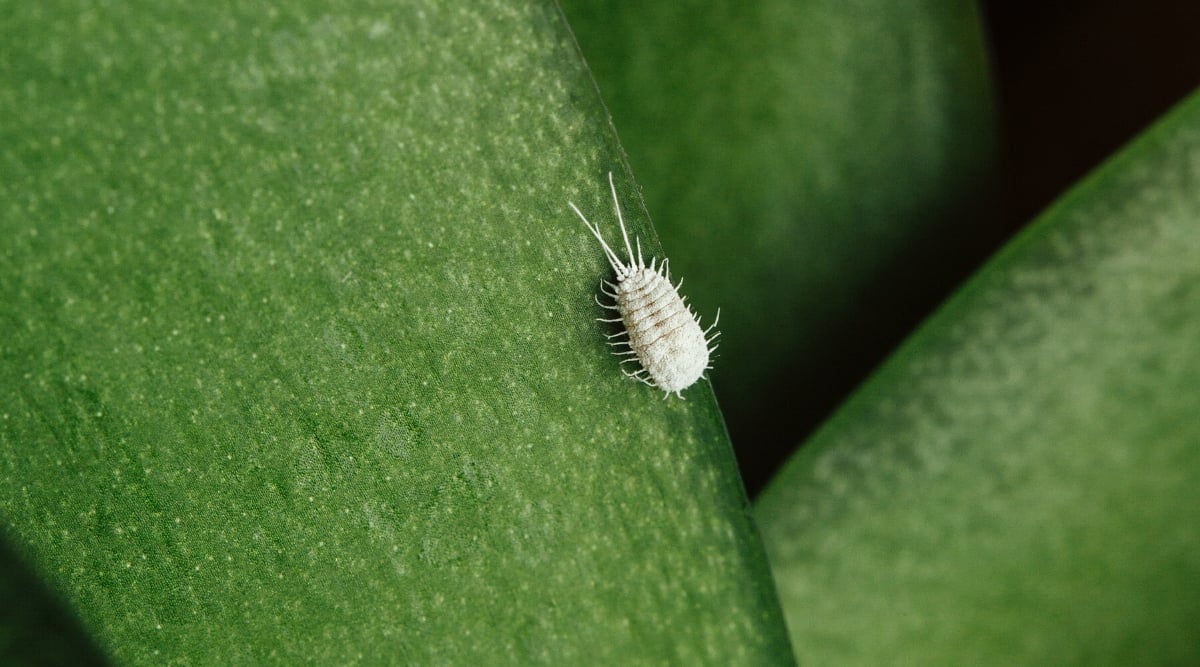

There are fairly only some pests that orchids could battle with, notably when grown in earlier decaying medium that hasn’t been refreshed in only some years. Mealybugs, scale, and completely totally different widespread houseplant pests may make their technique onto the one that you just simply love plant.
When you’re having pest factors, the very very very first thing it is advisable do is determine the pest and analysis the only resolution to maintain that pest. It’s terribly perhaps that a part of that course of will comprise eradicating the plant, inspecting its roots, and altering the medium.
When you’ve tackled the pest in regardless of technique is suitable, it’s more than likely suggestion to solely repot your plant solely. Why hazard the sooner pot or the sooner medium that will nonetheless be considerably infested?
Begin with a clear, unused pot. Get present orchid potting combine or bark. Select a vessel with nice air circulation that’s merely barely bigger than the inspiration mass. Your orchid has been by means of heaps; why not maintain it to a clear new dwelling?
Rotten Roots
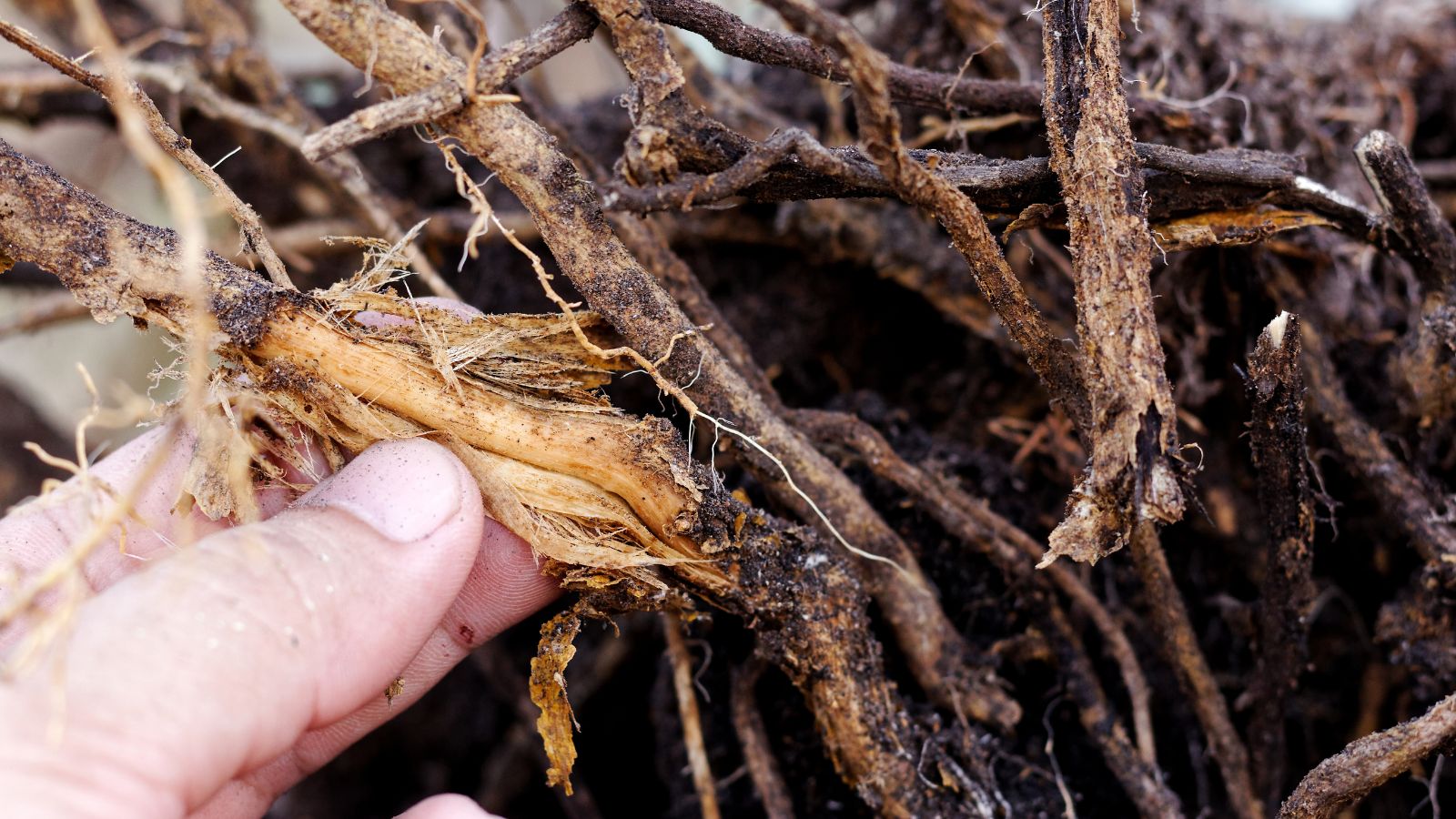

There are a few the rationale why your orchid’s roots can be rotting. The most common is overwatering, which might happen within the occasion you water the plant too often, when the medium returns an excessive amount of water, or each.
One totally different trigger for root rot is decomposing medium, which conjures up fungal progress which results in root rot. Decaying matter is solely not an exquisite place for orchid roots to sit down down down all through the stagnant air inside a house.
Regardless of the operate, in case your roots have rotted, then it’s time for a refreshing repot. Take the appropriate measures to take away the rotted parts, utilizing sharp, clear pruners to sever them from the host plant.
As rapidly as a result of the rotted parts are gone, take into consideration the scale of the remaining root mass. Select a mannequin new vessel that’s the right measurement. Relying on how a lot you eradicated, the mannequin new pot sometimes is similar measurement on account of the sooner one, or perhaps even barely smaller.
Resolve why the rot occurred all through the primary place. Did you water too often? Did the media preserve an excessive amount of water? Whether or not it’s advisable alter the kind of potting combine, acquire this now by way of the repot.
Poor Nursery Pot
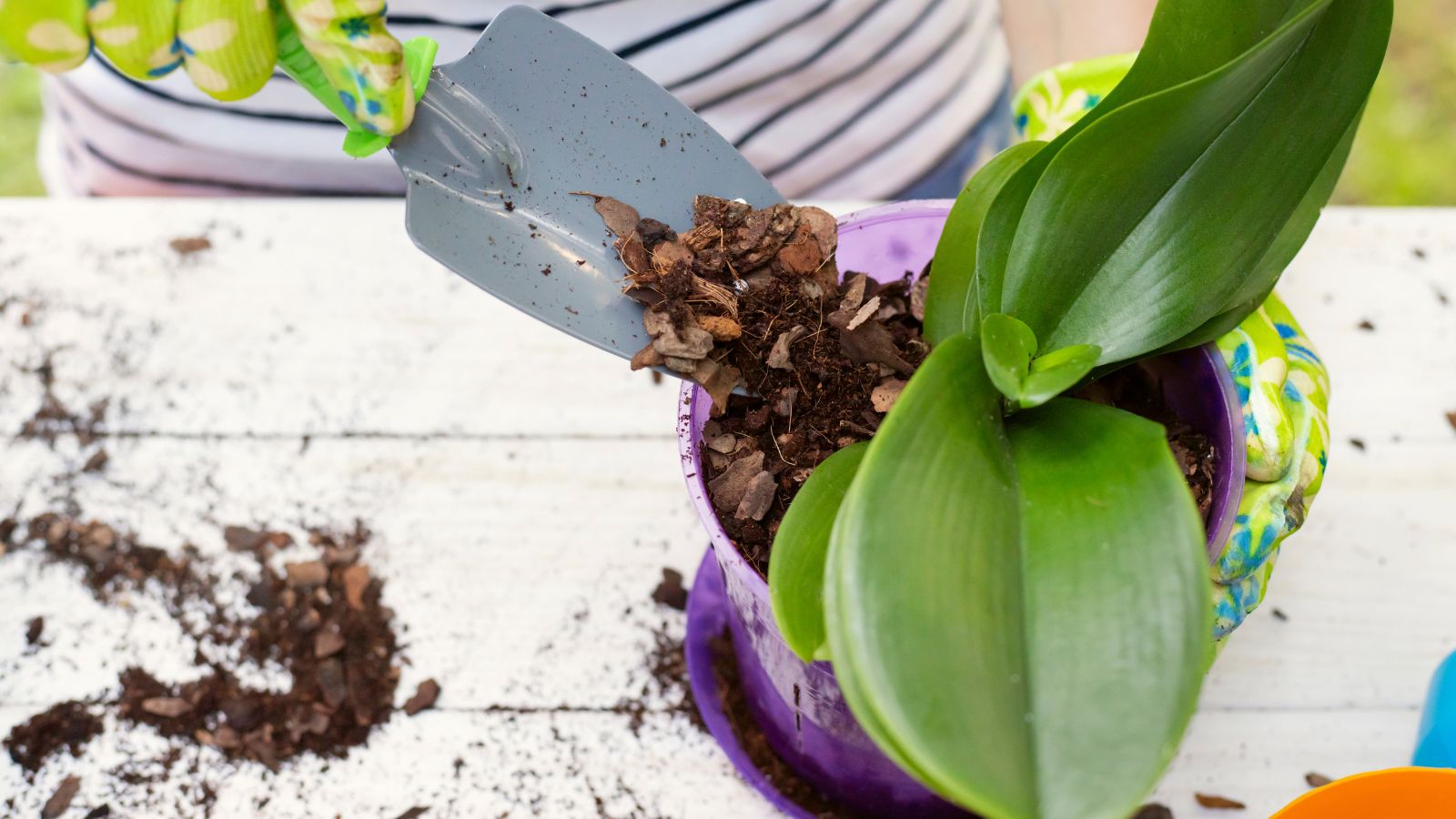

Lastly, often you get a mannequin new orchid on the retailer or pay money for one as a present, solely to right away understand it appears doomed from the beginning. It’d very correctly be in a pot with zero drainage, in typical potting soil, or potted too deeply with a buried crown.
Regardless of the operate, it’s more than likely not too late to put it aside. Merely repot your new plant instantly. For positive blooming orchids could drop their flowers if disturbed, so pursue this repot at your specific individual hazard. It’s worthwhile to weigh the significance of the blooms to the precariousness of the plant’s present state of affairs.
If the orchid is in an honest state of affairs—not finest, however not lethal—ponder ready till after the blooms are spent, then repot. When you assume the present state of affairs may rot the plant after a month or two, then it is best to more than likely change it to an acceptable pot instantly.
If it isn’t blooming to start with, then why not repot it now? Give it per week or so to acclimate to your particular person dwelling, after which change it to a turning into container with present, ethereal potting combine.
